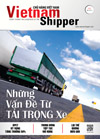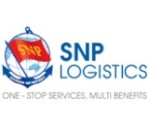The recent announcement by UPS that it will start delivering packages on Sundays next year is another sign of the inexorable growth of e-commerce – and the number of delivery trucks on the roads. More vehicles equal more fuel consumed and more CO2 emitted, increasing the pressure on companies to invest in fuel efficiency technology.
Research at the MIT Sustainable Logistics initiative shows that investing in greener trucks is not the only way to shrink the carbon footprint of the last mile. Companies can cut CO2 emissions as well as fuel bills by analyzing critical features of their delivery operations such as the types of vehicles used, where vehicles operate, and the topography of routes, and reallocating delivery capacity.
Coppel, one of Mexico’s largest retailers, piloted the findings and achieved significant savings. The company now plans to roll out a more ambitious program based on the research.
Navigating complexity
In Mexico, Coppel has around 1300 retail stores and operates with a fleet of some 1200 last-mile vehicles with an average performance of 30,000 home deliveries per day. In addition to its scale, the complexity of Coppel’s last-mile delivery network makes it an ideal candidate for research on fuel efficiency. The company’s truck fleet comprises a wide variety of vehicle models and age that negotiate varying road and traffic conditions. Its area of operation encompasses many different topographies ranging from densely populated urban areas such as Mexico City to rural communities.
From the retailer’s perspective, this complexity makes it difficult to study and compare the fuel efficiency of individual vehicles. It’s a problem that many companies, including large-scale commercial carriers, face; one reason why we need research on how delivery fleets deploy over large, geographically diverse areas.
Modeling road conditions
The MIT Sustainable Logistics researchers tackled the problem with the application of machine learning algorithms and models of road conditions based on geospatial data. For the initial research, deliveries made by some 160 trucks were studied.
The first phase looked at which combinations of road conditions most affect fuel consumption. Factors such as gradient variability (the hilliness of roads), the mean velocity of vehicles, the mean elevation or altitude in which vehicles operate, and delivery segment length, were considered. These factors were grouped into clusters to delineate different road profiles and associated fuel consumptions. For example, Cluster A grouped routes with a high elevation, hilly topography, relatively low average speed and short segment lengths (which primarily describes high altitude urban areas in Mexico City).
In the second phase, the team focused on how vehicle load influences fuel consumption. The researchers aggregated routes according to how full vehicles were and the weight of the vehicles. There were four groupings: low, medium, high, and overload truck utilizations. For each cluster, truck types were ranked by their fuel consumption to determine which models perform the best.
Phase three of the research involved a field study to validate how well the analytical results reflect real-world last-mile movements. Undergraduate students from Monterrey Tech in Mexico shadowed about 160 Coppel delivery vehicles. They completed roughly 1000 customer surveys covering some 3000 home deliveries. The field study also included nine distribution centers that served ten regions of Mexico.
After validating the geospatial study in the field, the task was how to use the findings to help Coppel improve the environmental performance of its last-mile fleet.
Next steps
First, the research yielded several insightful observations about Coppel’s delivery operations. For example, Cluster A (described above) is the cluster that has the highest impact on CO2 emissions. High vehicle utilization or even overloading do not appear to have a significant effect on fuel consumption. However, truck type and age have a notable effect on diesel burn rate; on average, vehicles that are more than eight years old have the largest emissions factors.
If certain vehicle types perform better on specific routes, then one way to minimize fuel consumption and CO2 emissions is to reassign vehicles according to these variations in performance. The researchers estimated that allocating trucks in this way could yield a 7.2% reduction in fuel consumption and CO2 emissions.
In October 2018, Coppel implemented a one-month pilot to test this thesis. Using ten vehicles with different operational features – four in the Culiacan region of Mexico and six in Mexico City – the retailer reallocated the trucks based on their suitability for different routes. The shift improved fuel efficiency by about 8%. In some cases, the vehicle exchange chalked up savings as high as 20%; equivalent to reducing fuel consumption and CO2 emissions by about 2,200 liters and 5,200 kgs respectively.
The retailer is now planning a full implementation of the pilot covering its entire last-mile fleet and estimates it will capture substantial savings yearly.
Look within for green solutions
Transportation is the main contributor to greenhouse gas emissions growth – and freight movements account for about 40% of transportation’s carbon footprint. The relentless increase in e-commerce volumes could push this figure even higher.
While companies need to continue developing more fuel-efficient freight delivery vehicles and network configurations, they should not overlook the potential of their existing last-mile operations to improve environmental performance. Matching vehicles to the terrain in which they operate can yield fuel savings and CO2 reductions without hefty investments in green technology.
https://www.scmr.com













